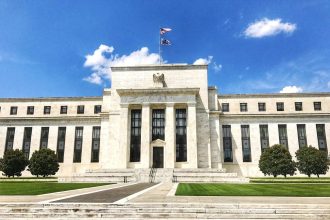The best bank for you is one that fits your unique financial situation. Each bank differs in its strengths, so finding the right bank to meet your needs — whether it’s earning more on savings or access to a large ATM network — is key.
Before opening a bank account, take these steps to help you make the best possible choice.
1. Identify the right account
Banks offer many different types of products and services, and comparing all of them at once would be overwhelming. A good place to start is matching the right types of accounts to your financial goals and priorities.
The most common accounts include:
- Checking accounts
- Savings accounts
- Money market accounts
- Certificates of deposit (CDs)
If you’re looking to replace your checking account, you might want to go with a bigger, traditional bank that has multiple types of checking accounts to choose from. Or, you may want a high-yield checking account like the ones offered at some credit unions and online banks.
If you’re looking to earn the best rate of return, consider opening a high-yield savings account. Online banks typically pay higher annual percentage yields (APYs) than brick-and-mortar banks. The average savings account APY as of this writing is 0.60 percent, but the top banks pay 5 percent APY and higher. Online banks are just as safe as other banks as long as they’re insured by the Federal Deposit Insurance Corp. (FDIC) or National Credit Union Administration (NCUA) for credit unions.
Money market accounts — which are similar to savings accounts but may have check-writing privileges — are another option. Many also come with a debit or ATM card, usually with a monthly transaction limit. These accounts have the potential to earn a high APY, but they may come with high minimum balance requirements, so make sure to find a bank with a minimum you can meet.
CDs offer another way to earn interest. When you lock up money in a CD for a set amount of time — anywhere from a couple months to several years — you’ll earn a guaranteed rate of return. You can access your money before the CD matures, but you’ll likely have to pay fees or give up some interest or even principal. Rates and terms offered vary from one bank to the next, so consider your financial goals and whether the CDs offered fit your needs.
You may also want a bank that offers debit card and credit card options, as well as lending products such as mortgages and personal loans.
2. Look for banks that charge low or no fees
There’s no need to stick with a bank that charges avoidable fees when many banks charge low or no fees.
Online banks are known for their low fees. Because they have few (if any) branches, they have lower operating costs, so they typically don’t charge as many fees as brick-and-mortar banks. There are even ATMs that provide no-fee withdrawals for certain online bank cardholders.
Watch out for monthly maintenance fees, ATM fees and overdraft fees. The average overdraft fee is $26.61, according to a Bankrate’s 2023 Checking Account Survey. Even opting for an overdraft protection program (where the bank covers a purchase that you can’t afford) can be expensive.
Many banks are taking steps to eliminate or reduce overdraft fees, including larger ones such as Citibank and Bank of America. Consider whether the banks you’re comparing have locked onto this trend by adopting more lenient overdraft policies.
Once you’ve found the best account for your needs, take these steps to avoid fees:
- Link your checking account to another account at your financial institution so that if you overdraw a checking account, the bank will pull money from the other account to cover the transaction. There may be a fee for this service, but it’s typically less than an overdraft fee.
- Sign up for low balance alerts through your bank or credit union’s website or app. These alerts, which may include text messages, warn you when you’re at risk of overdrawing your account.
- See how you can waive the monthly maintenance fee, if there is one. Frequently, banks require a minimum daily balance or direct deposits set up to waive the fee.
3. Consider the convenience of a local branch
When it comes to banking, another key factor is accessibility.
ATM location convenience, branch location convenience and the availability of online and mobile banking are important considerations, says Paul McAdam, senior director of regional banking at J.D. Power.
What conveniences you prioritize may vary depending on what you’re accustomed to. Consumers who are used to doing most tasks online may value digital banking resources over branch location convenience. The opposite may be true for those more accustomed to branch banking.
Still, branches continue to play a role in the lives of many consumers, with 72 percent saying in early 2023 they planned to use their bank’s branches at the same rate in the coming year, according to J.D. Power. The study also found 38 percent of consumers described branches as “essential.”
So, even if you plan to do almost everything online, you might want a bank with some branches.
4. Take a look at credit unions
Many consumers are familiar with the biggest banks, but credit unions are worth considering, too.
Credit unions are member-owned, not-for-profit organizations. Profits are typically returned to members in the form of lower fees, higher APYs and lower borrowing rates.
Joining a credit union is not as difficult as it used to be. Quite a few are available nationwide, and many allow you to qualify for membership simply by joining an organization or making a donation to a charitable organization.
5. Find a bank that supports your lifestyle
The bank you choose should meet your needs. If you’re self-employed, for example, you’ll want a bank that can provide support as you build a business.
If you’re trying to save more money, look for a bank that offers features to help you achieve your goals, such as:
- High-yield savings accounts
- A variety of CD terms, so you can find a term for your specific goals or build a CD ladder
- The ability to open and name separate savings accounts. For example, you may have a savings account for your emergency fund, one for a travel fund and another for a gift fund.
- Expense tracking features. Many banks have budgeting tools built into their websites or apps that make it easy to track your expenses and see where your money is going.
6. Examine digital features
Most banks offer basic services through an app or a website, like the ability to transfer funds, pay bills, check balances and make mobile check deposits.
However, not all banks offer features that are increasingly being sought by consumers, such as the ability to lock a debit card (to prevent a stranger from using it) or manage mobile banking alerts. Also, not all online banks offer a smartphone app, which may require that you sign in to your account through a mobile browser. Having an advanced banking app can make it easier to keep tabs on your accounts and help you save.
7. Understand the terms and conditions
Important information about a bank account can typically be found in the account agreement, which may not appear on the account’s home page but usually can be found elsewhere on the bank’s website. Reviewing the disclosure can help ensure you don’t overlook any hidden fees.
If there are monthly service fees, the account agreement will spell out ways to waive them. If there are out-of-network ATM charges, the fee disclosure may let you know whether the bank offers refunds.
Make sure your savings will be federally insured by the FDIC or the NCUA (just in case your bank closes). Should the bank or credit union close its doors, this insurance protects your funds up to $250,000 per depositor, per federally insured institution, per ownership category.
Also, as you compare products, watch out for promotional deals that expire. Some banks may offer compelling teaser rates that eventually fall to a much lower rate.
8. Read reviews for banks you’re considering
Once you’ve started comparing a handful of banks, reading expert reviews about them can give you a better idea of what to expect from the financial institution, including customer service, and its products. Customer reviews can also be helpful, especially since many consumers tend to stick with their banks for several years or longer.
If you’re having difficulty settling on one bank, managing accounts at several banks or credit unions may be the best solution for you.
Bottom line
Most banks have largely similar product offerings. The differences between them lie in the special features and details of each product, which is why it’s important to review their various terms and fees.
Consider whether you would benefit most from what each bank has to offer based on your goals and lifestyle. Where you prefer to bank and how you best manage your money matters. Finding a bank that ticks all your boxes and charges fewer fees will make handling your money much smoother.
Read the full article here
















